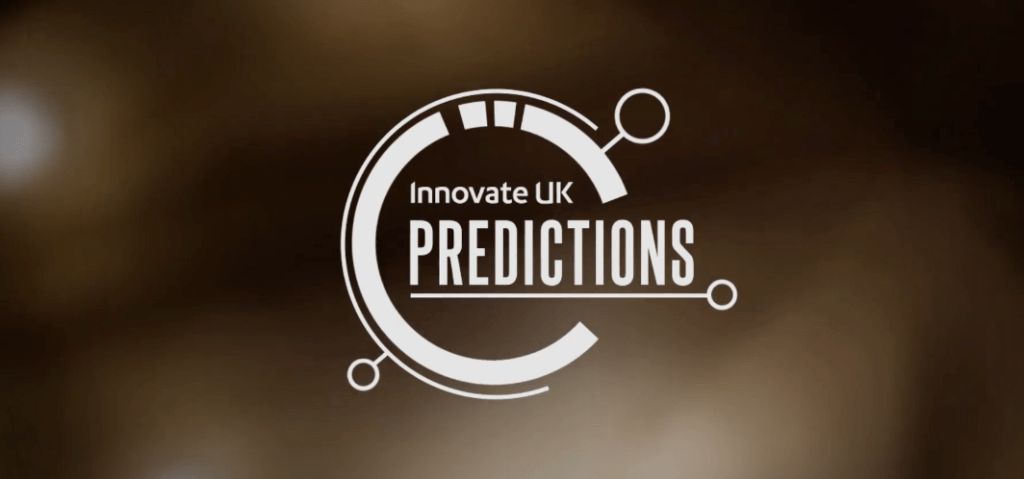HOW TO MEASURE SUCCESS IN A CORPORATE COMMS CAMPAIGN

The best measurement techniques for a Corporate Comms Campaign.
There are two questions agencies must ask themselves when launching a corporate communications campaign: what does your client want, and what does your client need? Let’s start with a simple answer: it depends. There are as many measures of success as there are types of businesses. A small family-run pizza chain measures success very differently to a multinational tech company. That’s why the first consideration for any agency looking to answer these questions and run a successful corporate comms campaign should be defining business objectives.
How do you define business objectives?
Business objectives usually comes down to the bottom line: the ability to stay relevant, remain competitive, and keep costs down. A company wanting to provide better training for its employees might ask itself how it can spend less on expensive educational programs while improving their quality. Perhaps the client is launching a new initiative, or pushing a new product, in which case their business objectives could be to raise awareness or maximise social engagement, for less money.
How do you measure the success of consumer campaigns?
The best way to measurably define how well a campaign has achieved its business objectives is through key performance indicators. Although universal measures of success exist, there can be a great many KPIs to consider when it comes to the murky world of corporate comms, and these vary greatly from client to client. For example, the John Lewis Partnership defined their objectives as limiting the volume of phone calls received at their help centres to a certain number. Other clients might define success as achieving a specific increase in conversion rates. The types of questions we might want to ask ourselves include ‘did we spend enough money on training our staff this year?’ and ‘did our hiring campaign employ the right people?’
Measures of success vary wildly between different types of organisations: a charity’s needs are very different from those of a bank. By nature of the fact that the charity sector tends to be less competitive than the banking sector, non-profit consumer campaigns are usually aimed at external organisations and the public in search of more donations. Banks, on the other hand, are more interested in both onboarding new clients AND retaining existing ones: if, for example, a bank decides to launch a bank account targeted at millennials, the success of the campaign would be measured by KPIs like sign-up volume and adoption rate.
When we launched our campaign for InnovateUK, a government body that provides funding for innovative businesses that make use of emerging technologies, we had to consider both the industry landscape and client-specific challenges: entrepreneurs were largely unaware of the grant program, and applications were few and far between.
 Innovate UK | Predictions
Innovate UK | Predictions
To track the performance of this campaign, we defined our KPIs as:
1. Engagement through social channels – this KPI is useful because it’s an accurate indicator of user behaviour. Data analytics tools built into social media platforms also allow us to view detailed metrics, analyse trends and patterns, and measure changes over time.
 Rolls Royce | Internal Communications Campaign
Rolls Royce | Internal Communications Campaign
2. Engagement with trade publications – this KPI was of primary concern to the client, because of the authority these publications bring to the table.
 Ethereum | Explainer Video
Ethereum | Explainer Video
We saw an 860% increase in average video views, a 650% increase in YouTube subscribers, and no fewer than 125 trade media publications picked up on the content release (not to toot our own horn or anything).
You can’t always measure KPIs. In certain firms, you’ll get partners who just want something. People want what they want; that’s how the world works. Great marketing teams simply attach purpose and meaning to it. Sometimes, the client criteria essentially come down to ‘we want something better, something new.’ You can’t really measure that with any given KPIs- it’s a matter of personal preference. This kind of situation is rare, but it does happen- where possible, try to assign those KPIs anyway.
So what makes a successful internal corporate communications campaign?
This is all very well for a consumer campaign, but for an internal corporate comms campaign aimed primarily at stakeholders and employees, it’s much more challenging to define KPIs or to achieve measurable outcomes. So what are we looking for?
In a nutshell, the purpose of an internal corporate comms campaign is to influence the behaviour of a group of people within an organisation. There are challenges – some people might shift their habits more slowly than others, and by and large the cost of this process can be very high in the short term. The key is to think strategically: the cost of not implementing procedural change can often be much higher in the long term. And the benefits are worth the expense: effective internal communications can be the key to building a unified corporate culture that fosters mentorship and gets the most out of each employee.
To run a successful campaign, we must identify exactly whose behaviour we are trying to influence, what that behaviour is, and how to measure changes in it. With a diverse workforce, composed of people of different ages, backgrounds and preferences, we have to adopt a line that resonates with them all. Of course, one size doesn’t fit all, but if we want to see a behavioural change from the majority of our audience, we need to find common ground and a unified voice.
But is there a way to actually measure behavioural change?
In short, yes there is. But only if the campaign is launched with clear objectives, and the tools to track them. You need these tools to record and check how change occurs – they can include anything from the ratio of emails opened to the response times for questions answered. You also need a system to judge the metrics – XAPI, for example, reads campaign data from different sources to monitor behavioural change.
The technology does exist to measure this in detail. For more high-tech campaigns, response times can be numerically recorded and analysed, increases in heart rate can be tracked, and other tools used to find out how our viewers are adapting and evolving their behaviour. Of course, this level of technological innovation isn’t available for every internal comms campaign, so for more ‘down to Earth’ initiatives, our KPIs come back to the bottom line.
So, Nucco, how do you action corporate comms campaigns that deliver measurable results?
It’s all about setting the scorecard. Some briefs can be fluffy: the more stakeholders are involved, the more everyone’s idea of size and effect varies. Get everybody on board, agree on criteria and use the same language: uniformity across the board is the surest way to avoid miscommunication and confusion. Don’t be afraid to challenge the brief: what the business needs and what the stakeholders want are often very different things. Solving specific communications challenges needs fresh perspectives from people who know what they’re doing, so allow yourself to be the expert. John Lewis Partnership asked us for a series of 15 videos for their internal communications- instead, we created 3 videos, 10 infographics and a number of characters to populate the world we’d built. That’s because we anticipated the needs of the business, held the fort and ended up delivering a smashing campaign.
For consumer campaigns, novelty pretty much always works: delivering something your audience hasn’t seen before generates interest. But for internal corporate comms campaigns, something new isn’t always the main driver, and doesn’t necessarily mean that employees will listen and take note. You need to take a good look at the organisation you’re working with, and the people it’s composed of. Who are the audience and stakeholders exactly? The marketing department of said organisation may be innovative, but some of the workforce may be resistant to change. Anticipate that, and proceed accordingly.
Sometimes, if you’re working with a small enough set of people (a targeted campaign for senior individuals, for example) you can be so granular and particular with your approach that your campaign can deliver immediate behavioural change. Companies are diverse and mutable things, with a wide range of cultural personalities. This means that being avant-garde with technology and UX design can work with a restricted set of stakeholders at general meetings, annual events and staff awards. But this type of success isn’t particularly measurable.
Not everything can be analysed as pure data. Measuring video views or social media engagement is one thing, and getting a sense of how inspired people are by your output is quite another. For example, we created a breathtaking VR experience for EDF Energy, shrinking viewers to the size of an atom and taking them on a journey through a nuclear reactor. We wanted to educate the public on the science behind nuclear energy, and get them excited about how it could be used to power the future. To get a better idea of the campaign’s performance, we also released it in 360 degree video format on YouTube. Not only did we hit 6 million views (a measurable outcome) but we also were able to gauge the personal reactions of our audience by looking at the comments section. This is perhaps the most rewarding yet intangible part of creating innovative content for us: inspiring, educating and opening minds.
And, finally, how does the Nucco approach to corporate communications set you apart from your competitors?
At Nucco, we don’t just wait around to be given instructions – we’ll build the brief for our clients. This means that we’re highly consultative at the brief stage, and we go through an in-depth exploratory phase before delivering our campaigns. If one of our clients asks for an animated video, we’ll ask them why. What’s the purpose of this content? How can we prove that it’s been a success?
We take the persona approach to the user experience. This means envisioning an idealised individual that represents the audience we’re trying to talk to, before actioning the campaign. We created three of them for the John Lewis Partnership, and each piece of video content we delivered was tailored to one persona. All of our aesthetic and design decisions were made with that persona in mind. We don’t just create stuff we like, or our clients like. Above all else, the persona has to like it. For further information on building relatable characters, you can check out our creative insights.
 John Lewis Partnership | Creating Internal Engagement
John Lewis Partnership | Creating Internal Engagement
One of the core values of our agency is: the content we create will remain relevant for the foreseeable future. Novelty lasts a heartbeat, but effective change in corporate communications takes far longer. That’s why we avoid gimmicks, in favour of engendering lasting change.
We’ll leave you with a cheeky example of our work. Take a peek at our internal comms campaign and animated infographic for Deloitte Digital, which educates employees about the history of industry from 1850 to the present day.
Get in touch with one of our experts today!


